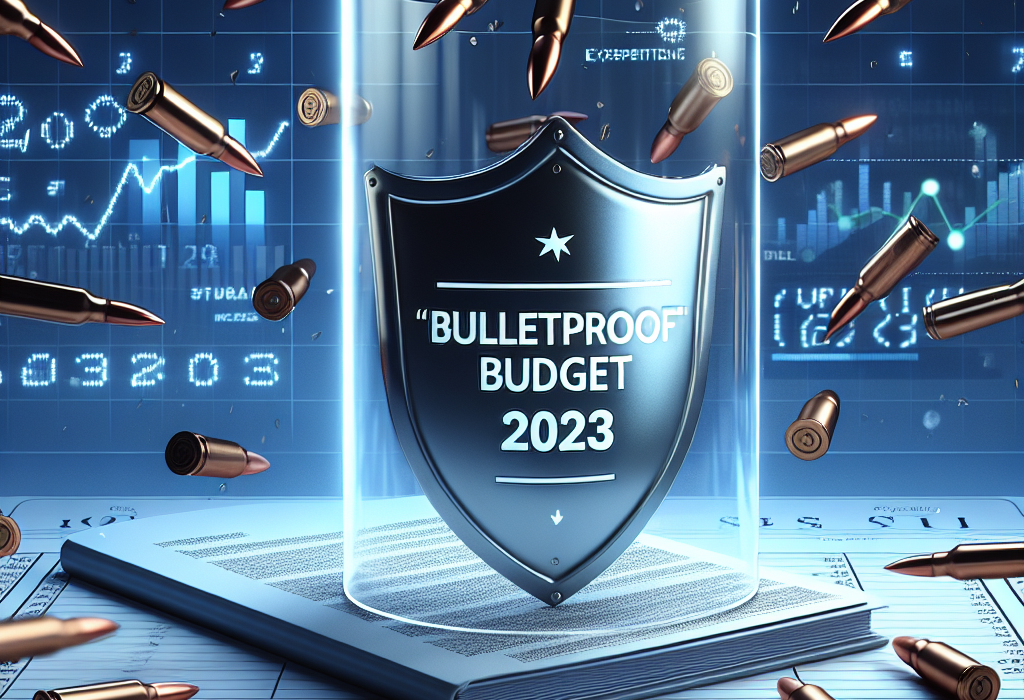Creating a bulletproof budget is crucial for financial stability, particularly in unpredictable economic times. Whether you are saving for a major purchase, managing debt, or simply looking to make smarter financial choices, a well-constructed budget can serve as your financial roadmap. Here’s a comprehensive guide on how to create a bulletproof budget for 2023.
Step 1: Assess Your Current Financial Situation
Conduct a Financial Audit
Start by taking a close look at your current financial situation. Gather all relevant financial documents such as bank statements, bills, and pay stubs. Make a list of your assets (savings, investments, property) and liabilities (debts, loans, credit card balances).
Calculate Your Net Worth
Subtract your total liabilities from your total assets to get your net worth. This gives you a snapshot of your overall financial health.
Step 2: Define Financial Goals
Short-Term Goals
These are objectives you aim to achieve within the next year, such as paying off a credit card, building an emergency fund, or saving for a vacation.
Long-Term Goals
These goals, which may include buying a home, funding your children’s education, or planning for retirement, typically take more than a year to accomplish.
Set SMART goals—Specific, Measurable, Achievable, Relevant, and Time-bound—to give your budgeting efforts a clear direction.
Step 3: Track Your Income and Expenses
Monthly Income
List all sources of income, including salary, side gigs, investments, and rental income. Ensure your calculations reflect your post-tax income for an accurate picture.
Monthly Expenses
Divide your expenses into fixed (rent/mortgage, utilities, insurance) and variable (groceries, entertainment, dining out).
Use budgeting apps like Mint or YNAB (You Need a Budget) to categorize and track your spending automatically.
Step 4: Create a Budget Template
Choose a Method
Select a budgeting method that suits your financial needs:
- Zero-Based Budgeting: Allocate every dollar to a specific category until you’re left with zero.
- 50/30/20 Rule: Devote 50% of income to needs, 30% to wants, and 20% to savings or debt repayment.
- Envelope System: Allocate cash into envelopes for each spending category to control spending.
Set Spending Limits
Create spending limits for each category based on your tracking results. Make sure to consider seasonal or irregular expenses, such as holidays and car maintenance.
Step 5: Prioritize Savings and Debt Repayment
Emergency Fund
Aim to build an emergency fund covering 3-6 months of living expenses. This fund is your financial safety net for unexpected expenses like medical emergencies or job loss.
Debt Repayment
Prioritize paying off high-interest debt first, often referred to as the debt avalanche method. Alternatively, the debt snowball method, which focuses on smaller debts first for quick wins, can also be effective.
Retirement Savings
Contribute to retirement accounts like a 401(k) or IRA. If your employer offers a 401(k) match, make sure to take full advantage of it.
Step 6: Automate and Monitor
Automate Payments and Savings
Set up automatic transfers to savings and investment accounts. Automate bill payments to avoid late fees.
Regular Check-Ins
Schedule monthly check-ins to review your budget and make necessary adjustments. Use these sessions to track your progress toward your financial goals.
Step 7: Adjust for Life Changes
Your budget should be flexible enough to adapt to life changes, such as getting a new job, moving to a different city, or starting a family. Reassess and modify your budget as your life circumstances evolve.
Step 8: Seek Professional Advice
If you find the process overwhelming, consider consulting a financial advisor. They can provide personalized advice tailored to your financial situation and goals.
Conclusion
Creating a bulletproof budget for 2023 involves assessing your financial situation, setting clear goals, tracking income and expenses, choosing a budgeting method, prioritizing savings and debt repayment, and staying vigilant with regular check-ins. With a little effort and discipline, you can build a budget that not only withstands the economic challenges of today but also sets you up for financial success in the future.












Leave feedback about this
You must be logged in to post a comment.